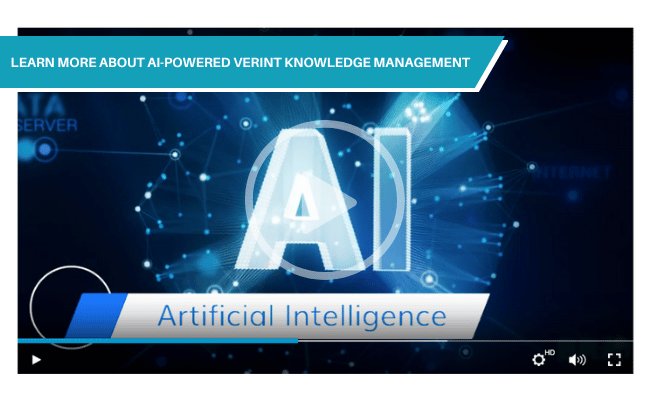This guest post is sponsored content provided by Verint. Learn more about Verint here.
In just a few short years, online communities have gone from a niche luxury tool to a necessity used across industries allowing companies and organizations of all sizes to provide a private place for the people who rely on their brand.
Now, an online community is part of a brand’s overall digital strategy. A community is one more place where brands can engage customers to participate, listen, and learn in ways that complement what the brand is doing in other public channels – like on their Facebook page or LinkedIn and Twitter feeds. And in the years to come, the capabilities and impact of online communities will only increase.
Where We’ve Been…
Not too long ago, brands realized the problem with their public social channel strategy – they didn’t own the messaging, the data, the user experience, or the overall functionality available to the consumer. They had little control over where their content appeared and their loyal customers’ privacy.
So, brands created their own branded communities to interact with consumers in a more trusted, manageable environment where they own the messaging, the data, the user experience, the functionality – and they get full control of the look and feel of the site itself.
These early communities served mostly as customer support forums. Customers would log in, meet other customers and service support personnel, and receive information about the product or service. At the time, these were valuable, especially in industries where users and customers were looking for connections with like-minded folks.
Communities gained popularity in the late 2010s, as brands employed features that quickly connected customers with information through self-service features while also connecting the community to other service options – even public communities where they could share content that would draw people into the private community and drive membership.
By 2017, industry analysts were watching these increased capabilities and knew what was on the horizon. They figured that by 2025 we’d see communities become a necessary part of any self-service ecosystem, integrating with other technologies, like knowledge management.
Today’s Community
In looking at the current capabilities and extendibility of Verint Community, you could argue that these analysts weren’t only correct in their prediction, but that what they foresaw is happening at an accelerated rate.
Verint Community provides holistic support of your overall customer support and service strategy. And it’s now working across digital channels, leveraging the power of the Verint Cloud Platform, which provides a complete suite of digital-first solutions, including tools powered by our Verint Da Vinci AI and Analytics. This means that Verint Community is easily extendable, providing a foundation from which you can expand and evolve your self-service and customer experience strategy along with the scale and growth of your organization.
A modern online community like this expands knowledge beyond assisted-service so that you can close the gap between your customer expectations and the limited resources you have to meet those expectations – which are always rising.
Verint Community currently features innovative publishing features, ranging from curated articles and wikis for your valuable FAQ information to easy-to-publish blog posting. It provides two-way interactions to receive ideation from customers and partners for ways to enhance products, while also allowing for users and moderators to create groups and micro-communities for niche factions to gather and collaborate.
All of this is provided in a flexible user interface with a drag-and-drop design that reduces the total cost of ownership and shortens the time to value. In addition, Verint Community gives you an easy look under the hood with insights and reporting dashboards to monitor and fine-tune your community.
Where We Go from Here
Analysts today continue to forecast a bright future for private online communities. There’s a movement toward communities becoming an entry point into self-service so customers can not only just interact with the brand, but also move into other channels and platforms to deliver the right service at the right time.
At Verint, we’re seeing this happen in real time as Verint Community extends its capabilities through our industry leading, AI-powered Verint Knowledge Management. This allows an organization to push highly relevant, verified, contextual crowdsourced knowledge back into Knowledge Management for continuous improvement of content.
Again, another evolution of Verint Community has been our integration into other self-service channels. We’ve continued to merge the community experience with things like Verint Messaging – which connects your community to public social media messaging channels. Verint Intelligent Virtual Assistant is also a valuable extension of Community, as it delivers instant and sophisticated human-like service that keeps your customers from tying up your service agents when they want quick answers.
As online communities continue to evolve, we see these integrations becoming increasingly important and necessary. Communities will continue to serve as a meeting point – but their ability to provide multi-faceted service has made them a vital part of any holistic digital self-service strategy.

